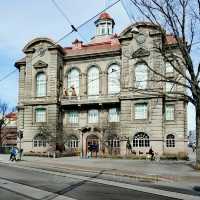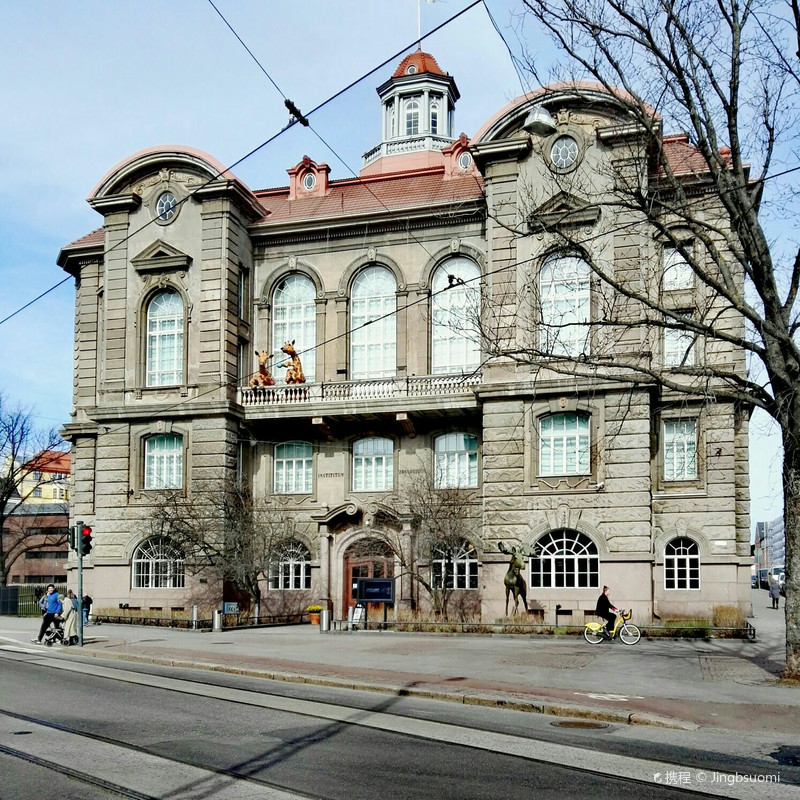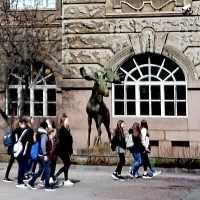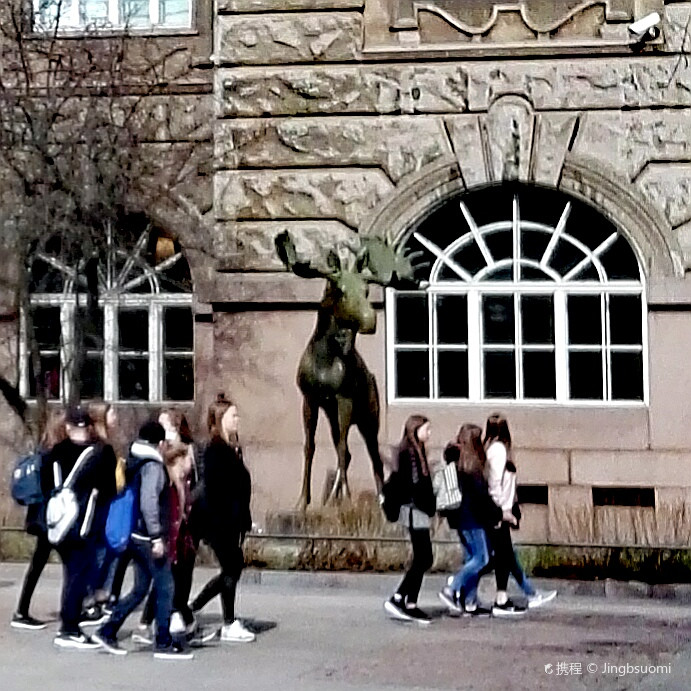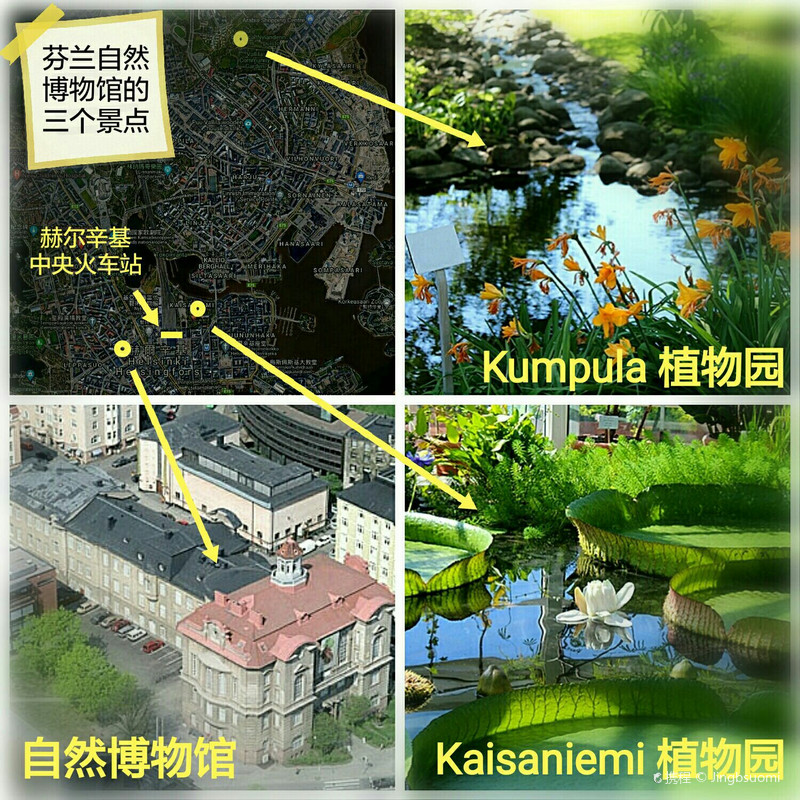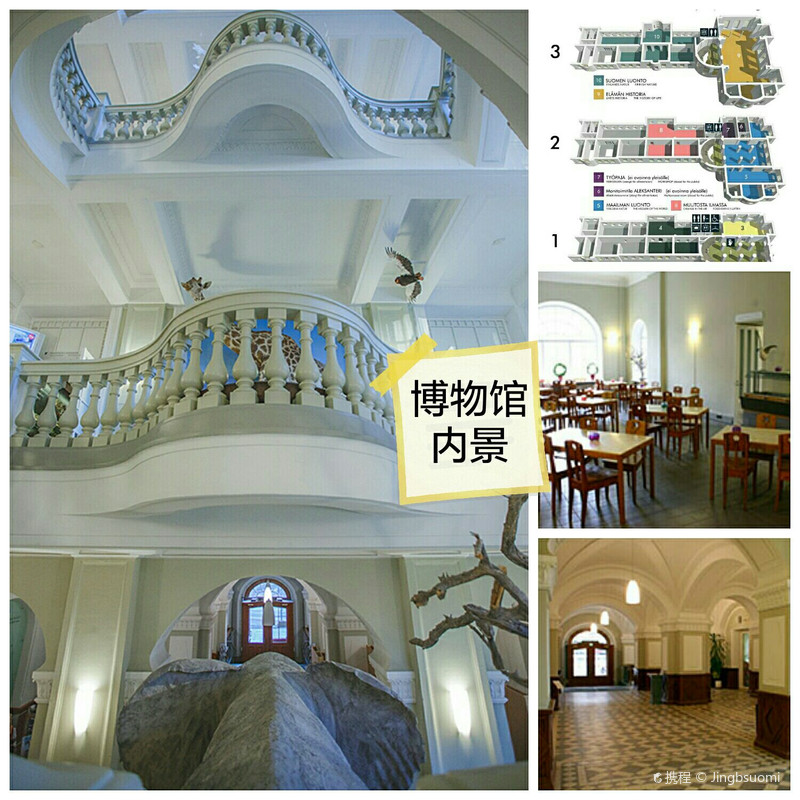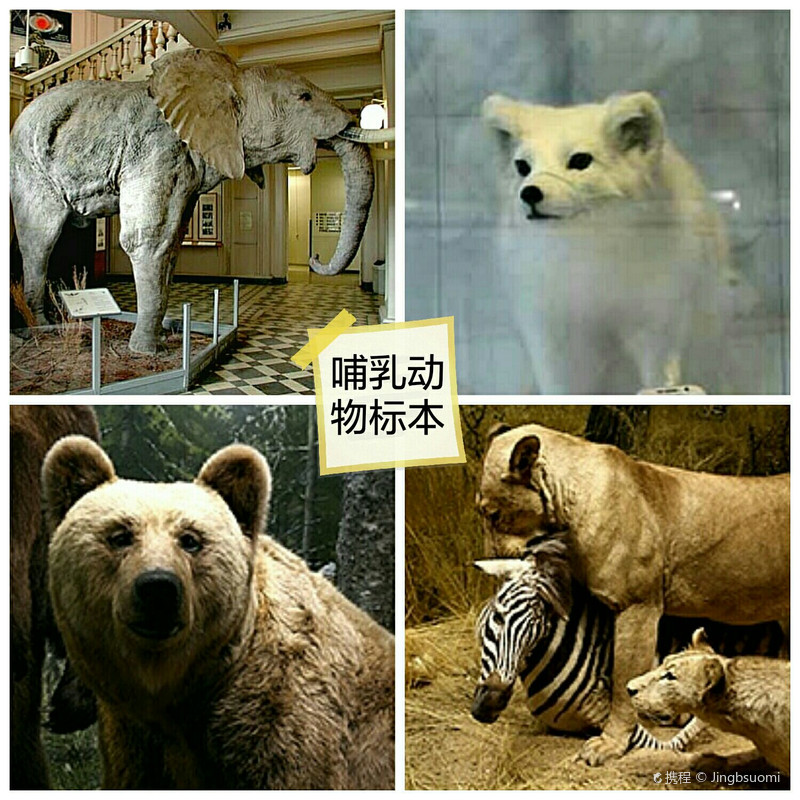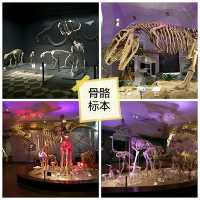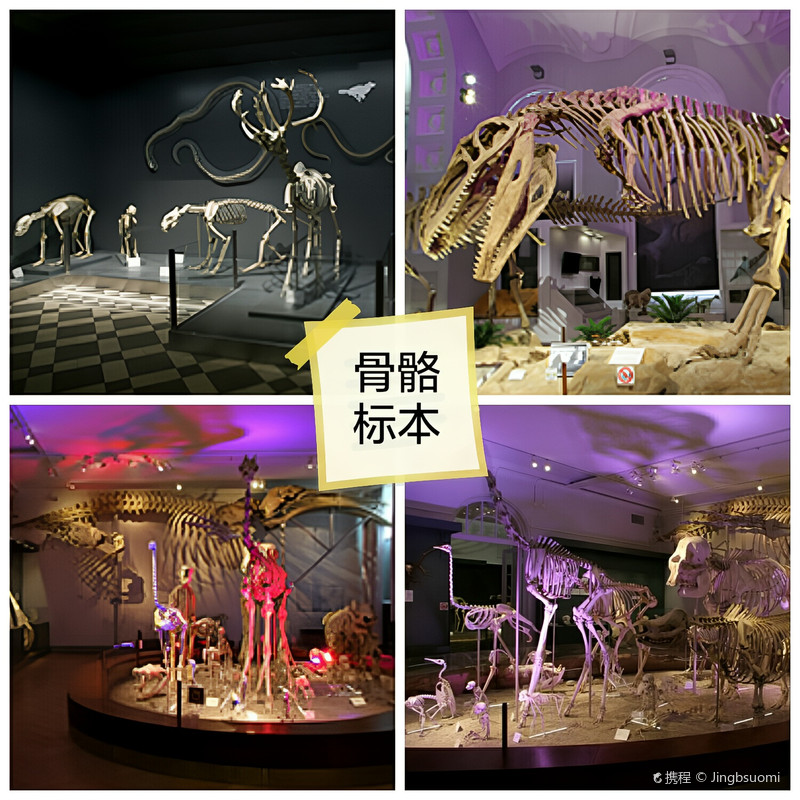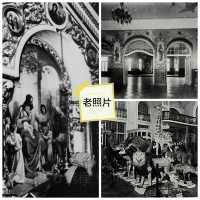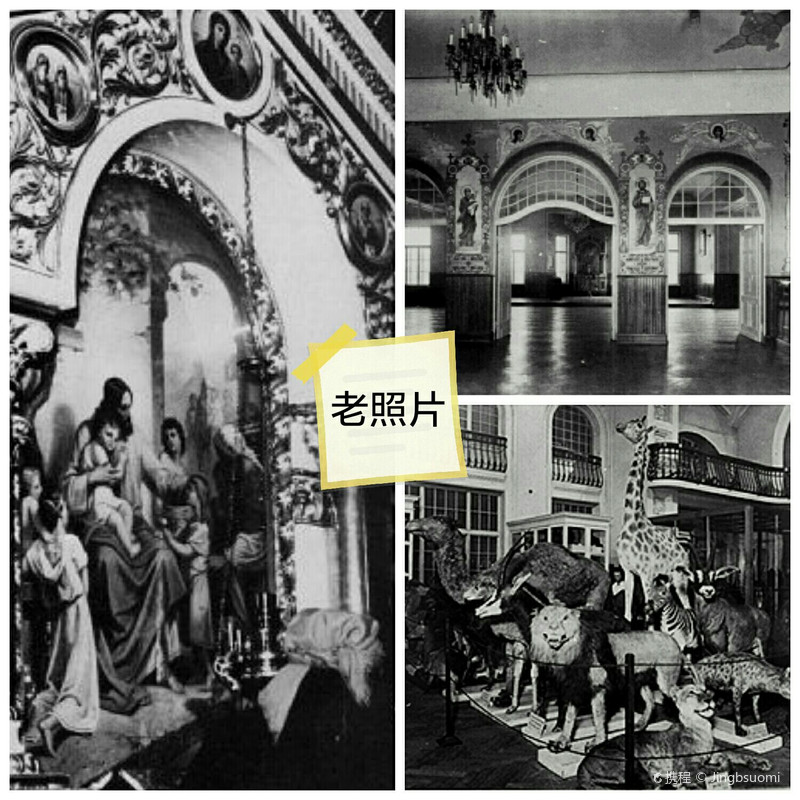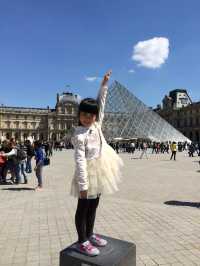The Finnish Natural Museum is often called Luomus (Finnish Luonnontieteellinen Keskusmuseo for short), and the English translation is Finnish Museum of Natural History. Although one of the three National Central Museums in Finland, it belongs to the University of Helsinki and has multiple functions such as scientific research teaching and popular science display, and has a collection of animal, plant, fungi, mineral and fossil specimens from all over the world. The collection is approximately 13 million copies, accounting for more than 50% of the collection in Finland. Luomus has three pavilions (attractions) located in the heart of Helsinki, two of which are botanical gardens. Kaisaniemi Botanical Garden is close to the Central Station, where plants from different climate zones on Earth are planted and exhibited. The Kumpula Botanical Garden focuses on flower gardening, and contains more than 50,000 geological ores, more than 600 meteorites, and 4.4 10,000 paleobiological fossils. The plant and fungal specimens of the two botanical gardens are about 3.3 million. The core of Luomus is the Museum of Nature, located on the west side of the Central Railway Station and behind the Parliament Building. It collects and displays specimens from Finland and around the world, and is organized by five permanent exhibition areas (Nature of Finland, Nature of the World, History of Life, Skeletal Stories, Climate change) shows visitors the diversity of nature. There are about 9 million specimens, the highest stock in Finland. The new Baroque building at the core was built in 1913 and its original appearance has not changed for more than 100 years. It was originally the Alexander School for Men (named after Tsar II), which was requisitioned by the Finnish Army in 1917 (after Finland's independence), and became the first military academy in Finland in 1919. The University of Helsinki bought the building from the government in 1923, built it into the Department of Zoology at the University of Helsinki, and the Museum of Animals, which has been open to the public for four hours every Sunday since 1925. With the increasing public education, the original tour mode has been unable to meet the needs of society. To this end, Finland established the Luomus Museum of Finnish Nature at the University of Helsinki in 1988, established the exhibition department (the dinosaurs launched in 1994 with a six-month visitor volume of million), and in 1996 the original "Animal Museum" was officially renamed the natural museum. In 2002, the Department of Animals of the University of Helsinki withdrew from the museum and moved to the new campus of Viikki. In 2005, the University of Helsinki undertook a three-year comprehensive maintenance of the building (renovated 253 old wooden windows and more than 100 doors). The reopened natural museum has become one of the most popular museums in Finland with a new look.
;
Finnish Museum of Natural History Review
4.3 /533 Reviews
Popular Destinations
Guizhou Travel | Pattaya Travel | Brussels Travel | Vienna Travel | Lima Travel | Tanjung Bungah Travel | Proserpine Travel | Greece Travel | Medan Travel | Los Angeles Travel | Shenzhen Travel | Honolulu Travel | Rockhampton Travel | Dublin Travel | Rome Travel | Gosford Travel | Novara Travel | Kawela Bay Travel | Matale Travel | Suva Travel | Jiaxing Travel | Manitowoc Travel | Pitigliano Travel | Isle of Wight Travel | Guaruja Travel | Newport Travel | Kamifurano Travel | Wilshamstead Travel | Brandon Travel | Abidjan Travel
Recommended Attractions at Popular Destinations
Bangkok attraction near me | Tokyo attraction near me | Manila attraction near me | Hong Kong attraction near me | Seoul attraction near me | Taipei attraction near me | Los Angeles attraction near me | New York attraction near me | Shanghai attraction near me | Kuala Lumpur attraction near me | Shenzhen attraction near me | Guangzhou attraction near me | Osaka attraction near me | Singapore attraction near me | London attraction near me | San Francisco attraction near me | Beijing attraction near me | Macau attraction near me | Bali attraction near me | Paris attraction near me | Orlando attraction near me | Jakarta attraction near me | Ho Chi Minh City attraction near me | Phuket attraction near me | Chicago attraction near me | Toronto attraction near me | Cebu attraction near me | Dallas attraction near me | Istanbul attraction near me | Dubai attraction near me
Popular Attractions
Chinatown in Canberra | Featherdale Sydney Wildlife Park | SEA LIFE Sunshine Coast Aquarium | Universal Beijing Resort | Emperor Qinshihuang's Mausoleum Site Museum | Sydney Tower Eye | Sentosa | Universal Studios Hollywood | Melbourne Skydeck | Ha Long Bay | Humble Administrator's Garden | Escape Penang | Chengdu Museum | Busselton Jetty | Tohoku Safari Park | Lido Mamita Seaside Cafe 'de Playa | Lighthouse Calella | Dolphins Arena | Monte de Sao Bartolomeu | La Porta Magica o Alchemica | Snow Park | Monte Selvagem | Sydney Zoo | Summer Palace | Chengdu Research Base of Giant Panda Breeding | Wushan Little Three Gorges | Leshan Giant Buddha | Dujiangyan Irrigation System | Jingshan Park | Children Amusement Park
Popular Travelogues
Bangkok Travelogue | Tokyo Travelogue | Hong Kong Travelogue | Seoul Travelogue | Los Angeles Travelogue | New York Travelogue | Shanghai Travelogue | Kuala Lumpur Travelogue | Shenzhen Travelogue | Osaka Travelogue | Singapore Travelogue | London Travelogue | Beijing Travelogue | Macau Travelogue | Bali Travelogue | Paris Travelogue | Phuket Travelogue | Toronto Travelogue
Payment Methods
Our Partners
Copyright © 2024 Trip.com Travel Singapore Pte. Ltd. All rights reserved
Site Operator: Trip.com Travel Singapore Pte. Ltd.
Site Operator: Trip.com Travel Singapore Pte. Ltd.
